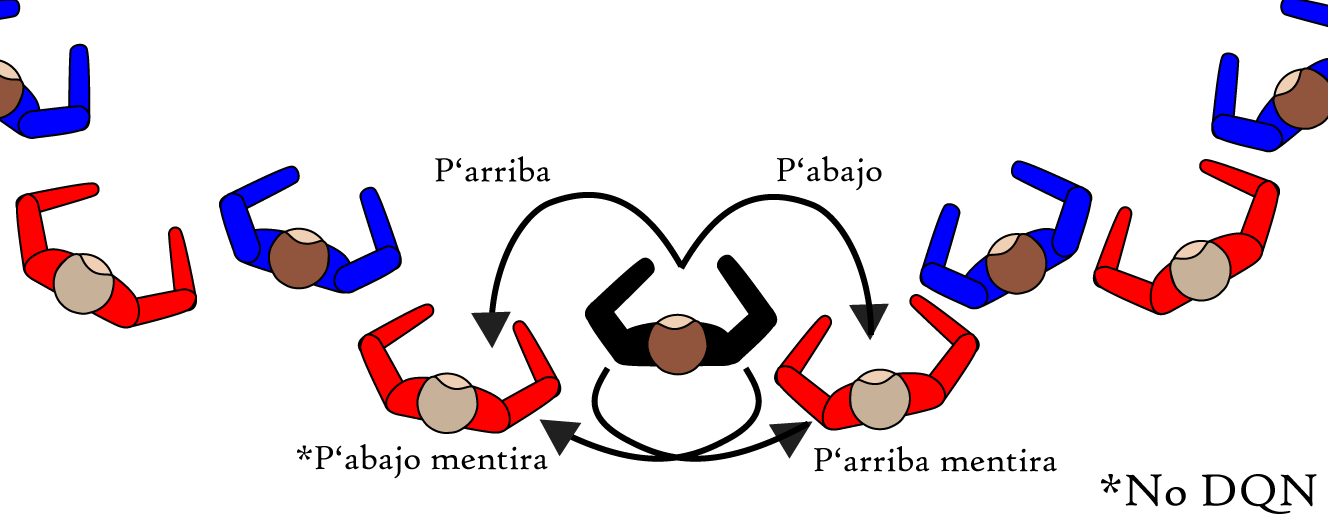Who is my p'abajo, p'arriba, and p'arriba mentira partner?
As you all know, I love the logic behind rueda calls and one topic that I find particularly fascinating is the wide variety of partner changes that can be applied to the same move. I’m going to focus here on four partner change instructions that can be applied to almost any rueda move. This is my personal philosophy based on discussions with many different rueda instructors and it may be that your local cantante calls these differently. Please let me know what you think of my logic. I hope to add video examples to this post soon and please feel free to send your comments to me directly on email (craig@dolder.us) or on FB Messenger on my page Rueda.Life.
A preamble on directions in rueda
The typical indication of direction in Rueda is up (Arriba) and down (Abajo). These are usually indicated by adding (P’arriba) or (P’abajo) after a partner change call. The rule of thumb is that Arriba is the direction the lead is facing. In normal (P’dentro, inside) closed position Arriba is anticlockwise. In normal (P’dentro, inside) open position Arriba is clockwise. That means a normal Dame in open position is a P’abajo move. Al Medio is, by this definition, ambiguous as the leaders are facing to the middle. Here I follow the convention of most cantantes I’ve met and stick with the open position definition of Arriba in Al Medio. However, it would be much clearer to use the often called moves for right (Derecha) and left (Izquierda).
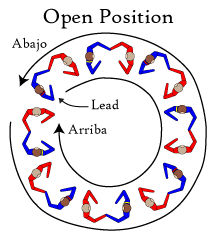
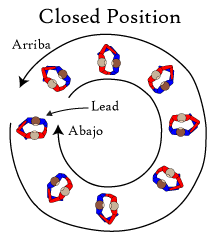
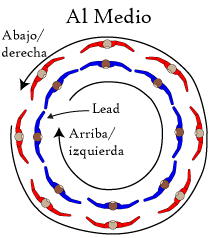
In order for a rueda call to work you need a move (Dame, Enchufa, Prima) and a direction (Abajo or Arriba). In addition to that you can add a modifier, in this case Mentira (a lie). My philosophy for lies is that the lie relates to the partner change, not the move. This means the lead goes to do the move, and starts the partner change, then alters their course to finish with a differet partner (often the one they came from). Since P’abajo is considered the default direction, it’s often dropped. So, when you hear the call Dame, it’s actually short for Dame p’abajo. Similarly, since Dame is the most common partner change many cantantes just call P’arriba meaning Dame p’arriba.
The four combinations of the directions and the modifier mentira are:
- P’abajo (Down the rueda and the default direction in open position)
- P’arriba (Up the rueda)
- P’abajo mentira (Down the rueda, but a lie! You still need to move.)
- P’arriba mentira (Another lie, but it’s far from standing doing nothing)
Positioning 1 - Guapea
This is probably the rueda position that people are most familiar with, yet these directional calls can still cause confusion. The figure below shows what partner the black clothed lead goes to in each call.
- A P’abajo move means the lead goes to the follow to their right (sometimes known as la vecina) and it ends in a Dile Que No (DQN).
- A P’arriba move means the lead passes to the follow to the left of their current partner ending with DQN.
- A P’abajo mentira move starts like the normal move, but ends in Guapea without a DQN. An example of this would be Enchufa y Guapea, which was used in the first iteration of Mixta for segundos.
- A P’arriba mentira move ends with exactly the same partner, but involves the lead going to the other side and launching into a DQN. An Enhufa p’arriba mentira ends with the lead doing a left turn on 5-6-7 then turning back to the original partner for the DQN. For Prima the lead typically passes under the arm as if going to the next partner and does a lead’s left turn to the DQN.
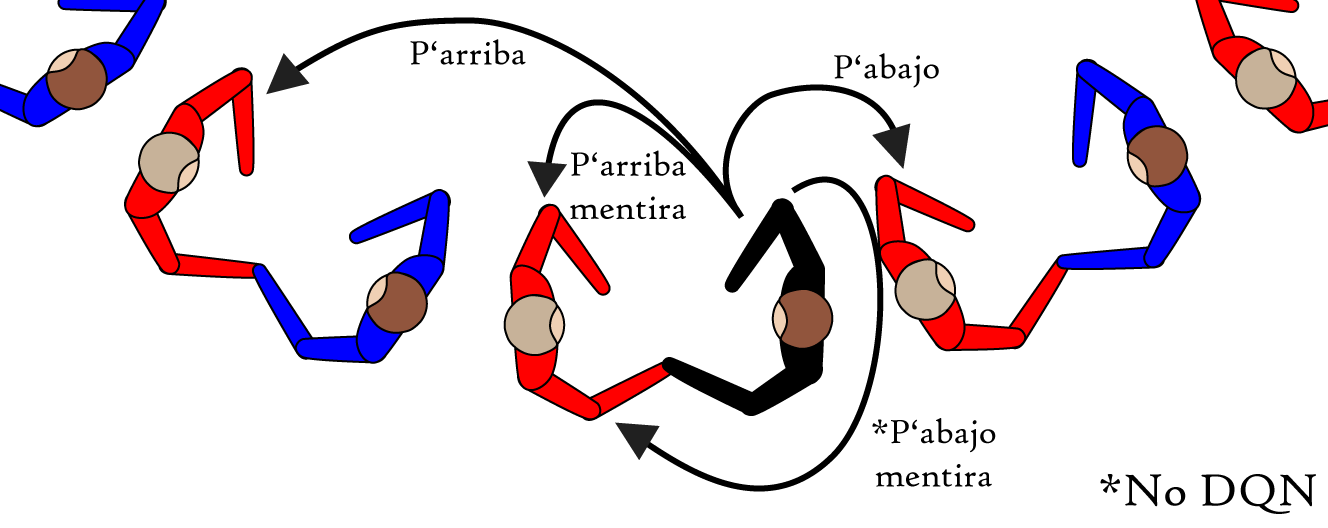
Position 2 - Manolin
There are a couple moves that will put you in this same positioning such as Cubanito or Patin. Here the lead is directly in front of the follow. This is one level of abstraction from a normal Guapea position, but the same rules apply. The figure below shows which follow the lead ends up with after each move. A P’abajo change and a P’arriba change end with a DQN with the follows to the right and left respectively. Both of the Mentira moves end up with the follow behind the lead, P’abajo with a right turn without a DQN, a P’arriba with left turn and ending in a DQN.
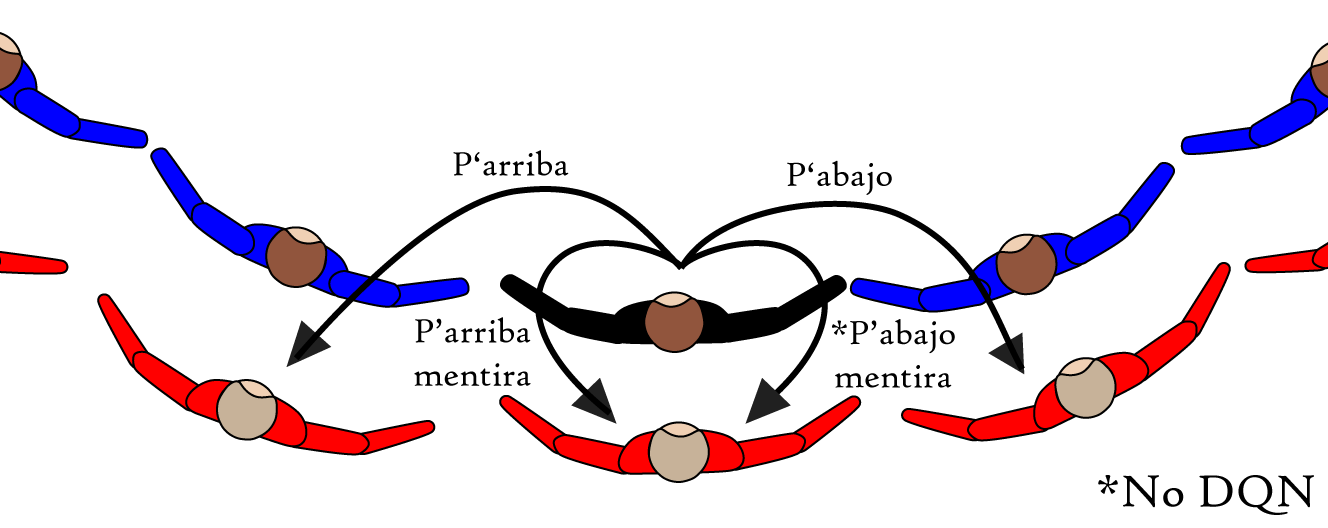
Position 3 - Al medio
Al medio places the leads between two follows. In this case the P’abajo and P’arriba mentira changes end with the same follow. Similarly an P’abajo mentira and P’arriba end with the same follow. This is illustrated below.
